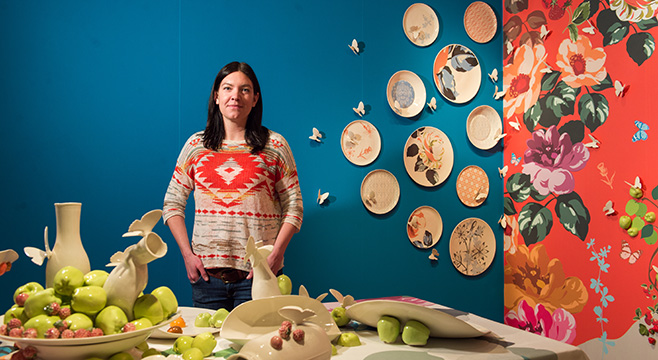
During her 30 years as a professor in the School of Human Ecology, Ruth Danielson Davis showcased student work in the rooms, hallways and cabinets of the Human Ecology Building. Now, a $4.6 million gift from her estate gives students better exposure for their work in a gallery setting.
The gift supports the Ruth Davis Design Gallery, named in her honor when the gallery moved into the school’s new Nancy Nicholas Hall in 2012. Davis, who died in 2011, “recognized very early how important it is to give students the experience of critical public exposure of their work,” said Virginia “Terry” Boyd, interim director of the Textile, Research, Education and Outreach (TREO) Design Lab. “It is essential in their growth as a design professional. The new gallery now gives students a professional environment for their work.”
“Ruth’s gift epitomizes a respected tradition of women’s philanthropy, sends a wonderful message and sets a bar for faculty philanthropy,” said School of Human Ecology Dean Emerita Robin Douthitt, who knew Davis well. “She felt forever grateful for being a faculty member here, and her gift will undoubtedly inspire many to follow her powerful example.”
In addition to students, the Ruth Davis Design Gallery offers a valuable venue to faculty and community artists, as well as a climate-controlled environment for visiting exhibitions, said School of Human Ecology Dean Soyeon Shim.“Davis’s generosity not only provides a campus exhibition space, but it also supports the thirdlargest gallery in Madison,” she added.
Growing up near Horicon Marsh, Davis viewed the natural environment as the source for sound design thinking and was a pioneer in green and sustainable design. She drew and photographed bark textures and incorporated rocks, reeds and flowing water into her textile panels. Davis created a technique for applying watercolors, dyes and inks directly to textiles, which she exhibited around the globe.
